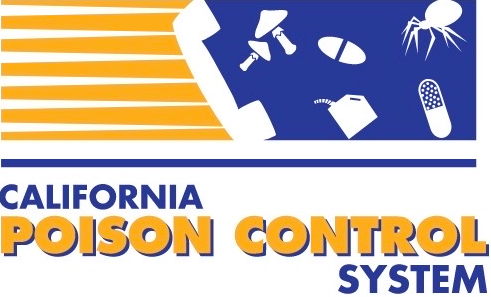By Alicia Minns, MD
Introduction
Gamma-hydroxybutyric acid (GHB) and its precursors, gamma-butyrolactone (GBL) and 1,4-butanediol (1,4-BD) are popular drugs of abuse and primarily cause CNS depression. There are numerous common names for GBH such as “Liquid ecstasy,” “Georgia Home Boy,” and “Liquid G.” In the 1960s, GHB was being considered for use as a general anesthetic however it is devoid of analgesic properties and due to the number of adverse effects, it was never used in clinical practice. However, early research suggested that GHB was associated with an increased release of growth hormone and an increase in REM sleep. Subsequently in the 1980s and 1990s, GHB become a popular supplement in the body building community. Its euphoric effects were realized at that time as well and GHB became a popular “club drug.” Because GHB can cause rapid coma and amnesia, there was growing concern about its use in drug-facilitated sexual assault. In 1990, the FDA banned all nonprescription use of GHB due to this concern. Sodium oxybate is the sodium salt of GHB and is used as a treatment for narcolepsy. GHB is classified as a Schedule I drug due to its popularity as a drug of abuse and the concern for its use in drug facilitated sexual assault, and also as a Schedule III drug for the treatment of narcolepsy. There are numerous other GHB analogs that have industrial and commercial uses and may result in GHB intoxication.
Case presentation
A 21 year-old male was found unresponsive at party and brought to the Emergency Department (ED) by EMS. On physical exam, his temperature was 35.5°C, heart rate 50 beats per minute, blood pressure 95/50 mmHg, respiratory rate of 8 breaths per minute, and oxygen saturation of 95% on room air. He had no external signs of trauma. His pupils were 2mm and reactive. He had a Glasgow Coma Scale of 3 and was observed to have occasional jerking movements of his extremities. The remainder of his physical exam was unremarkable. Rapid sequence intubation and mechanical ventilation was performed and he was admitted to the ICU for further management. However prior to transport out of the ED, he suddenly awoke and pulled out his endotracheal tube. He admitted to using a substance called “Liquid Ecstasy.” He was discharged from the ED after a short period of observation.
Questions
- What are the most common cardiovascular effects of GHB?
- How is GHB tested for?
- Are there any antidotes to reverse GHB toxicity?
Epidemiology
There is limited data regarding statistical trends on the use of GBH and its analogs. There seems to be increased use in Europe where there is growing concern and rising number of people seeking treatment for addiction to GHB and GBL. In 2007, there was an epidemic of toxicity from toy beads, called Bindeez® or Aquadots® mostly in England and Australia. 1,4-BD was used as the sticky surface that allowed the beads to adhere to one another. There were multiple cases of toxicity reported. Although GHB has been implicated as a “date rape” drug, studies suggest that GHB is actually rarely present in cases of drug-facilitated sexual assault. There is a trend of decreased GHB exposures in the United States reported to poison control centers in recent years, which contrasts with the increased use seen in some European countries and Australia.
Pathophysiology
GHB is both a metabolite and a precursor of the inhibitory neurotransmitter gamma-hydroxybutyrate (GABA). Endogenous GHB is synthesized from glutamine and binds both pre- and post-synaptic GHB receptors. This results in several effects including inhibition of GABA release, prevention of dopamine neurotransmission in certain areas of the brain, and modulation of serotonin and opioid pathways. It also modulates the release of growth hormone but lacks anabolic effects. The GHB receptor has no affinity for typical GABAA and GABAB agonists such as GABA and baclofen. GHB increases the release of growth hormone by promoting slow wave sleep without effecting total sleep time. The mechanism for this is unclear.
Exogenous GHB acts on the GABAB receptor and ultimately leads to decreased dopamine and acetylcholine concentrations. Exogenous GHB is well absorbed orally with peak blood concentrations occurring 25-60 minutes after ingestion. 1,4-BD is also rapidly absorbed and quickly metabolized to GHB. Eating food with oral GHB has been shown to decrease the peak plasma concentrations and increase the time to peak concentration. GHB is metabolized by the liver, either to GABA, or to succinic acid, which enters the citric acid cycle and gets metabolized to water and carbon dioxide. 1,4-BD gets metabolized to GHB by the same enzymes that metabolize ethanol (alcohol dehydrogenase and aldehyde dehydrogenase). Ethanol can therefore inhibit the metabolism of 1,4-BD by acting as a competitive substrate for alcohol dehydrogenase. GBL also gets converted to GHB by an enzyme called serum lactonase. Very little of GHB gets eliminated unchanged in the urine. The half-life of GHB is 20-53 minutes with the majority of the dose being eliminated within 4-8 hours after ingestion.
Clinical presentation
The onset of effects is typically within 15-45 minutes after ingestion. Doses less than 10mg/kg lead to mild clinical effects such as hypotonia, euphoria and anterograde amnesia. Doses of 20-30mg/kg lead to drowsiness and myoclonus. Doses approaching 50mg/kg can lead to coma. Doses exceeding 50mg/kg can also cause bradycardia and respiratory depression in addition to coma. CNS depression usually resolves after a few hours and patients are typically back to baseline within 4-8 hours after ingestion. Other common neurologic symptoms include ataxia, disorientation, confusion, dysarthria, hypotonia, hyporeflexia, slurred speech, amnesia and incoordination. The sedative effects of GHB are synergistic with other sedative-hypnotic drugs. Seizures or seizure-like activity has been reported however in most cases, a misdiagnosis of myoclonus was attributed to seizures. Miosis is common and nystagmus can occur. Common cardiovascular effects include bradycardia and hypotension. Hemodynamic compromise is rare. Hypothermia is relatively common and is usually not severe. The main respiratory effects are respiratory depression, bradypnea, Cheyne-Stokes respirations and apnea. Nausea and vomiting are common gastrointestinal symptoms.
GHB dependence and tolerance can occur with regular use. Following a period of abstinence or decreased dose, users can suffer GHB withdrawal, which is similar to other sedative-hypnotic withdrawal syndromes. Most patients suffering GHB withdrawal are body builders. Patients taking GHB for narcolepsy rarely suffer withdrawal, as their dose is low and only taken at night. Symptoms including hypertension, tachycardia, diaphoresis, anxiety, agitation, confusion, tremor, and auditory and visual hallucinations. In severe cases, psychosis, delirium and seizures can occur. Withdrawal can occur rapidly after the last use, typically 1-6 hours after last use.
Diagnosis
The diagnosis of GHB intoxication is typically made on the basis of the patient’s history and physical exam. It may be difficult to differentiate GHB from other sedative-hypnotic ingestions, however the rapid normalization of mental status is more typical of GHB. Routine testing for GHB and GHB-like drugs is not routinely available and is usually only requested in the setting of drug-facilitated sexual assault. Additionally, interpretation of serum or urine concentrations is complicated due to rapid metabolism and elimination of GHB, the presence of endogenous GHB, and the spontaneous GHB-GBL interconversion. GHB can be detected in the urine up to 12 hours after use using gas chromatography-mass spectrometry (GC/MS) however cuff-off concentrations must be used to distinguish endogenous production of GHB from exogenous use. There is also poor correlation between plasma and urine concentrations and clinical effects.
Treatment
The mainstay of treatment in supportive care. Decontamination with activated charcoal or gastric lavage is unlikely to be of benefit given the rapid absorption of the drug. In most situations, the risk of aspiration outweighs any benefit of decontamination. Focus should be on airway protection endotracheal intubation in patients unable to maintain an airway or in the situation of hypercarbia or hypoxia unresponsive to oxygen. Vomiting can be seen and in the presence of loss of protective airway reflexes, this may increase the risk of pulmonary aspiration. Intravenous fluids can be administered for hypotension. It would be unusual to need vasopressor support. Hemodynamically unstable bradycardia is also unusual, and although atropine can be used, pharmacologic intervention is rarely required. Those patients whose symptoms resolve may be discharged from the hospital after appropriate psychiatric assessment if indicated.
In the setting of GHB withdrawal, benzodiazepines are typically used however are sometimes ineffective. In these situations, using barbiturates, baclofen, or propofol are considered second line management options. Although there is limited experience with GHB withdrawal, dexmedetomidine is a consideration.
Discussion of case questions
- Common cardiovascular effects include bradycardia and hypotension. Hemodynamic compromise is rare. It is unusual for patients to need any pharmacologic intervention.
- Routine drug screens do not test for GHB or related substances. Urine and serum can be tested using gas chromatography-mass spectrometry (GC/MS) for forensic purposes. These tests are not routinely available when managing an acutely poisoned patient.
- There are several proposed antidotes for GHB including naloxone, flumazenil and physostimgine however there is no pharmacologic basis for using these and they are unlikely to be helpful in improving a patient’s mental status.



